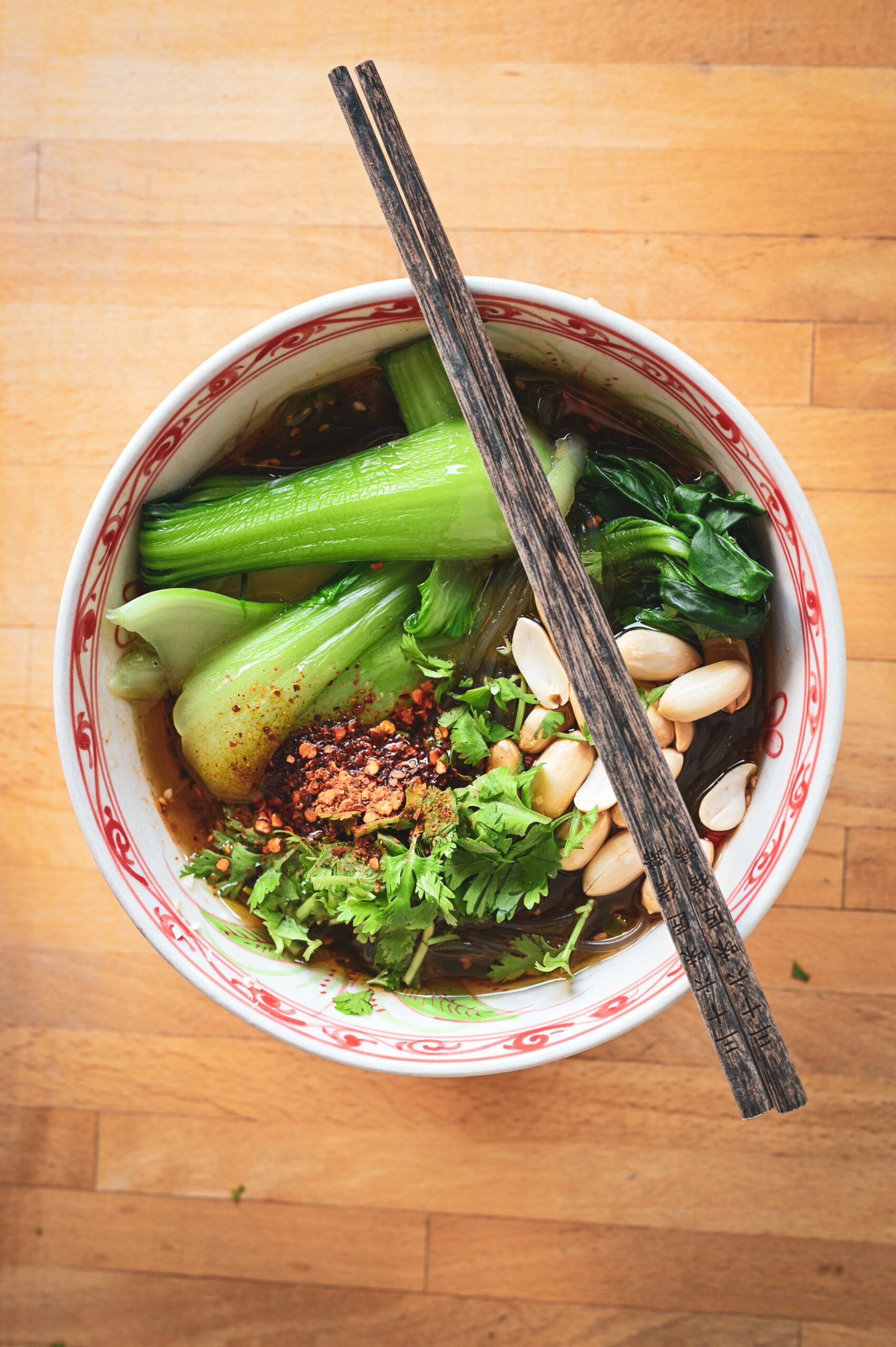
While food supplements can play an important role in gut healing, nothing can beat these five recipes! While my approach is “you can’t out-supplement a bad diet”, there are also people, including kids, who can’t take quality supplements for many reasons. Try these recipes below and your gut will thank you!
Ghee is another name for clarified butter and is a traditional healing food in India. It is made by heating butter until it liquefies into a golden liquid. The milk solids are removed, making it suitable for those who are lactose intolerant. It may be purchased in health food stores.
Ghee contains a combination of saturated and unsaturated fats. About two-thirds of its fat content is saturated, and one-third is mono- and polyunsaturated. Of the saturated fat content, most of it is of the short-chained variety (including butyric acid), making it easily digestible. Ghee also contains antioxidants, conjugated linoleic acid, and fat-soluble vitamins A, D, E, and K.
Mix with a whisk or food processor briefly until evenly mixed. Refrigerate. It will store in the refrigerator for about two weeks. Use one to two tablespoons. daily on warm food as a butter substitute. Good on warm vegetables, brown rice, and winter squash. Enjoy!
Clarified butter: This is a rich source of butyric acid, which is a short-chain fatty acid that supports the health and healing of cells in the small and large intestines and serves the natural processes of aerobic energy metabolism. Short-chain fatty acids can have the protective ability to impede the proliferation of damaging cells in the colon, and they have been associated with helping to maintain healthy blood lipid and sugar levels.
L-Glutamine: The gastrointestinal tract is by far the greatest user of glutamine in the body; the cells in the intestine use glutamine as their principal metabolic fuel. Most of the research on glutamine is connected to maintaining intestinal permeability.
Colostrum: Immune factors in colostrum can help balance and support a healthy immune system, which is the key to good health.
Zinc carnosine: A specific chelate of zinc known as zinc carnosine has been used as an antiulcer/mucosal healing drug in Japan for several years. It has demonstrated prevention of stress-induced ulcers.
Broth, made from the bones of animals, has been consumed as a source of nourishment throughout the ages. It is a traditional remedy across cultures for the sick and weak. A classic folk treatment for colds and flu, it has also been used historically for ailments that affect connective tissues such as the gastrointestinal tract, the joints, the skin, the lungs, the muscles, and the blood. It serves as the base for many recipes including soup, sauces, and gravy.
Bone broth contains the ingredients that are in bone and this includes cartilage which forms joints, covering and adhering to the ends of bones. Bone and cartilage are both classified as connective tissue. Connective tissue is one of the four basic tissue types that exist in animals. It functions to bind or hold together and to support and strengthen the body. Connective tissue contains extracellular matrix.
Bone broth provides the following nutrients in a tasty meal:
You can store any excess broth in the freezer and defrost it for a later time.
Slow cooker instructions: Cover the slow cooker and cook on low for at least 12 hours or up to 48 hours. If your slow cooker has time settings, you may need to occasionally reset the slow cooker’s cycle. Check the slow cooker occasionally, skimming off any foam that collects on the surface and adding additional water as needed to keep the ingredients covered.
A cup a day will keep the doctor away!
Remove and keep the outer leaves. Cut the cabbage into strips like when you cut it for a salad. Place it in a bowl or basin and mix it with the salt. Within the next five-10 minutes, it will begin to wilt and form brine.
Then, place the outer leaves from the cabbage, which you kept, in a large glass container. Layer them and slowly put the cabbage on top, pressing it as hard as possible. At this point, you can also add some pepper.
After leaving a margin from the edge of the container, cover with something heavy that can fit the whole inside, leaving only a small margin and add five centimetres of brine on top.
After a week remove the foam from the surface and clean the vessel. Repeat the process every two days until the foam stops coming out and the fermentation is complete. Once this is done, your sauerkraut is ready.
Store in the refrigerator, airtight, for up to two months.
Chop the cabbage and put it in a bowl or basin. Add the cold water and the salt until it covers the cabbage. Mix the cabbage with your hands. Leave for 10 minutes and remove the water. Put a plate on top to press them and leave them at room temperature for 12-24 hours. Then strain the cabbages and rinse with cold water. Squeeze gently so that there is not much liquid left and let it drain well. Put the rest of the ingredients you want with the spices in a bowl and mix well. Mix and then put the mixture in a large glass container. Close the lid and leave in a cool place for at least 24 hours. This will foam, occasionally open the lid to release the gases. Finally, store them in the refrigerator for at least two days before serving. Keeps in the fridge for a month.
Kefir is a natural probiotic dairy product, like sour milk, that is easily digested by the body, improving bowel function and helping restore intestinal flora.
It contains beneficial bacteria that contribute to the prevention of colon cancer, as well as vitamins, minerals, and proteins of high biological value. It is a good source of calcium, phosphorus, and magnesium, due to the milk it contains, which contributes to the health of the nervous system, the proper development of cells and the maintenance of the body, and the production of energy. It is rich in vitamins of the B complex, mainly B1 and B12, biotin, folic acid but also vitamin C. It is a completely balanced food and its frequent use contributes to a healthy immune system.
*For this recipe you will need kefir “seeds” which you can find online or in selected health food stores. As you will grow your kefir it will be making more and more seeds, which you can store in the freezer and give to your friends!
Ratio of milk kefir 1:10 – Put 50 gr of the kefir seeds in a clean, airtight glass jar.
Add half a litre of milk, preferably organic cow’s or goat’s milk (ideally full fat) and close. The jar should not be filled to the top.
Leave it at room temperature for 24-48 hours and away from direct sunlight. The longer you leave the kefir seeds in the milk, the thicker and more acidic it will become.
Do not leave it for less than 12 hours or more than three days.
Then pass it through a plastic strainer, not a metal strainer because with continuous use metals settle on the seed of the kefir. The liquid you will get is drinking kefir.
Put it in a glass bottle and store it in the refrigerator. What will be left in the strainer is the kefir seed that you will use for subsequent cultures.
Thoroughly rinse the jar and the kefir seeds in the strainer with plenty of cold water and repeat the same preparation process from the beginning.
You will notice that after each crop, the seed will slowly multiply. The more seed used, the thicker the kefir will be. This way you will either increase the amount of milk or remove some of the amount of seed, which you will either keep or give to someone else to cultivate. You can adjust the taste and texture of the kefir during cultivation.
If you want the kefir to be thinner, leave it for less time and if you want it thicker, leave more seeds. The seeds should always be covered with milk. If you want to interrupt the cultivation of kefir for a few days, you can store the seed in a small amount of milk diluted half-and-half with water in the refrigerator until the next use.
Follow the instructions above by using your favourite vegan milk, like almond, hemp, or coconut. Since there is no lactose and hence sugar to be fermented, you need to add a spoonful of sugar (ideally coconut sugar, date sugar or maple syrup, or chopped dates).


| Charlbert St, St John’s Wood London NW8 7BT |
|
| +30 6977 2099 88 | |
| info@naturopathy-med.com |